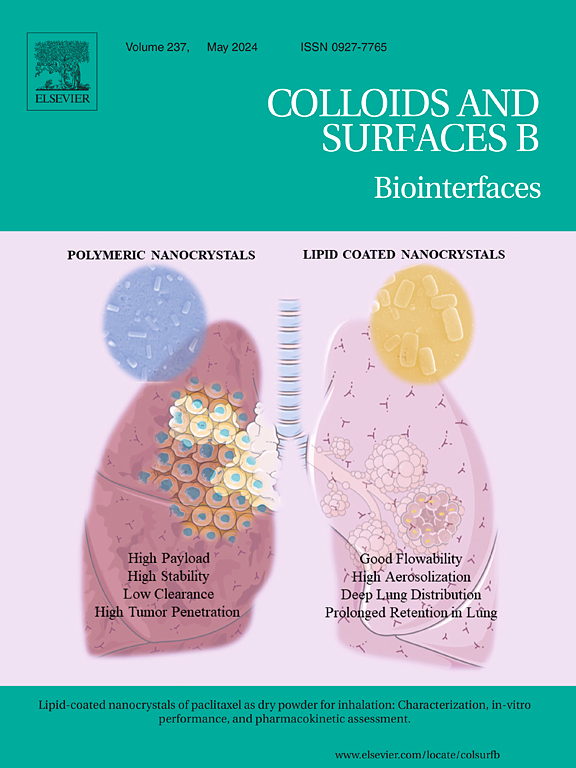Functionalized hydroxypropyl-β-cyclodextrin inclusion complex for combined tumor therapy through intelligent delivery of paclitaxel and polarization of M2-like tumor associated macrophages
IF 5.4
2区 医学
Q1 BIOPHYSICS
引用次数: 0
Abstract
The treatment outcomes of chemotherapy are far from satisfactory due to suboptimal cellular uptake and inadequate intracellular release of antitumor drugs. Meanwhile, M2-like tumor associated macrophages (TAMs) in the tumor microenvironment promote cancer growth and metastasis. The combined strategy of chemotherapy and reprogramming M2-like TAMs within tumor microenvironment has emerged as a novel paradigm for cancer therapy. Hence, a pH-sensitive double-targeted inclusion complex was constructed for combined cancer therapy through the controlled paclitaxel (PTX) delivery and re-education of M2-like TAMs. The inclusion complex employed arginine and biotin modified hydroxypropyl-β-cyclodextrin (Arg-CD-Bio) as the host, with benzimidazole and mannose modified hyaluronic acid (BM-HA-Man) as the pH-sensitive plug. PTX was encapsulated in the inclusion complex. In vitro experiments indicated that the Arg-CD-Bio/BM-HA-Man inclusion complex could facilitate the specific release of PTX at the tumor site. The inclusion complex could be effectively internalized by M2-like TAMs and MCF-7 cells and further reprogramme M2-like TAMs to M1-like TAMs. In vivo antitumor therapy in 4T1 tumor-bearing mice had achieved remarkable suppression efficacy. These results suggested that the PTX-loaded Arg-CD-Bio/BM-HA-Man inclusion complex was a promising platform for efficient cancer treatment.
求助全文
约1分钟内获得全文
求助全文
来源期刊

Colloids and Surfaces B: Biointerfaces
生物-材料科学:生物材料
CiteScore
11.10
自引率
3.40%
发文量
730
审稿时长
42 days
期刊介绍:
Colloids and Surfaces B: Biointerfaces is an international journal devoted to fundamental and applied research on colloid and interfacial phenomena in relation to systems of biological origin, having particular relevance to the medical, pharmaceutical, biotechnological, food and cosmetic fields.
Submissions that: (1) deal solely with biological phenomena and do not describe the physico-chemical or colloid-chemical background and/or mechanism of the phenomena, and (2) deal solely with colloid/interfacial phenomena and do not have appropriate biological content or relevance, are outside the scope of the journal and will not be considered for publication.
The journal publishes regular research papers, reviews, short communications and invited perspective articles, called BioInterface Perspectives. The BioInterface Perspective provide researchers the opportunity to review their own work, as well as provide insight into the work of others that inspired and influenced the author. Regular articles should have a maximum total length of 6,000 words. In addition, a (combined) maximum of 8 normal-sized figures and/or tables is allowed (so for instance 3 tables and 5 figures). For multiple-panel figures each set of two panels equates to one figure. Short communications should not exceed half of the above. It is required to give on the article cover page a short statistical summary of the article listing the total number of words and tables/figures.
 求助内容:
求助内容: 应助结果提醒方式:
应助结果提醒方式:


